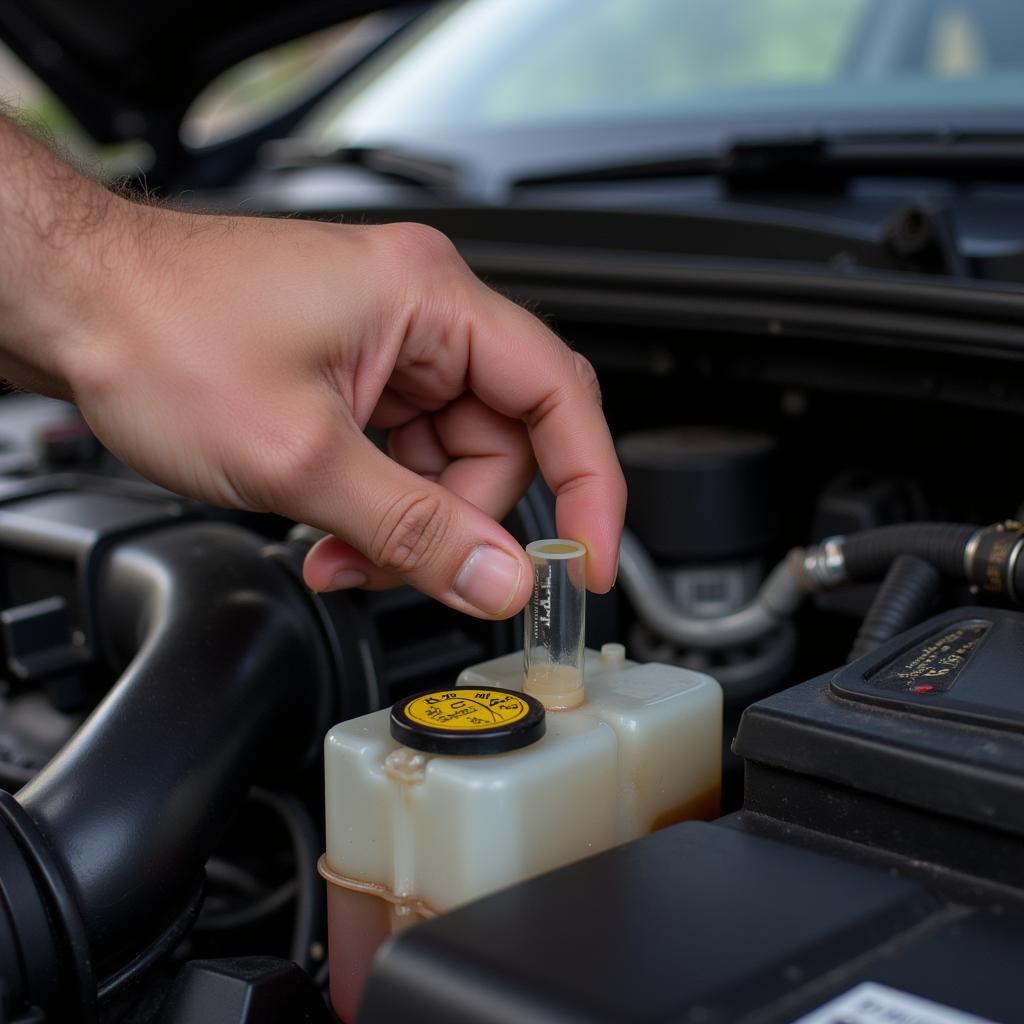The AdBlue warning light on your car dashboard can be a bit of a scare, especially if you don’t know what it means. AdBlue is a solution that’s used to reduce harmful emissions from diesel engines, and a low AdBlue warning light means that your car is running low on this important fluid. This article will guide you through the meaning of the AdBlue warning light, its potential causes, and the steps you can take to resolve the issue.
What Does a Low AdBlue Warning Light Mean?
When the AdBlue warning light comes on, it means your car’s AdBlue tank is getting low. AdBlue is a crucial component for diesel engines, as it helps to reduce harmful nitrogen oxide (NOx) emissions. Without enough AdBlue, your engine won’t be able to operate efficiently and could even be damaged.
Common Causes of a Low AdBlue Warning Light
The most common reason for a low AdBlue warning light is simply that you’re running low on AdBlue. However, there are a few other potential causes that you should be aware of:
- Faulty AdBlue sensor: This sensor monitors the level of AdBlue in the tank. If it’s malfunctioning, it might be giving you false readings, leading to a low AdBlue warning light even when the tank is full.
- AdBlue leak: If there’s a leak in your AdBlue system, the fluid can be lost before it reaches the engine, triggering the warning light.
- AdBlue pump failure: The AdBlue pump is responsible for delivering the fluid to the engine. A faulty pump can prevent the AdBlue from reaching its destination, resulting in a low AdBlue warning light.
- AdBlue injector malfunction: The AdBlue injector sprays the fluid into the exhaust stream. If the injector is faulty, it may not be able to inject the necessary amount of AdBlue, leading to the warning light.
How to Fix a Low AdBlue Warning Light
The best way to fix a low AdBlue warning light depends on the underlying cause. Here’s a breakdown of the possible solutions:
- Refill the AdBlue tank: If you’re simply running low on AdBlue, the easiest solution is to refill the tank. You can buy AdBlue at most gas stations or automotive stores.
- Check for leaks: Look for any signs of AdBlue leaks under your car, especially near the AdBlue tank and the pump. If you find a leak, you’ll need to have it repaired by a qualified mechanic.
- Replace the AdBlue sensor: If you suspect a faulty sensor, you can replace it yourself or have it replaced by a mechanic.
- Repair or replace the AdBlue pump: If the pump is faulty, it will need to be repaired or replaced.
- Replace the AdBlue injector: A faulty injector will need to be replaced.
What Happens If You Ignore the AdBlue Warning Light?
Ignoring the AdBlue warning light can lead to serious consequences, including:
- Engine damage: The engine won’t be able to operate efficiently without enough AdBlue, and could eventually be damaged.
- Reduced performance: Your car’s performance will be affected, and you might experience a loss of power.
- Increased emissions: Your car will emit more NOx pollutants, which can harm the environment.
- Failure to pass emissions testing: In some jurisdictions, you may fail your emissions test if your AdBlue system isn’t functioning properly.
Can You Reset the AdBlue Warning Light?
You might be tempted to try resetting the AdBlue warning light yourself, but it’s not always a good idea. Resetting the warning light without addressing the underlying issue will only postpone the problem and could lead to more serious issues down the road.
“The AdBlue warning light isn’t something to ignore. It’s a critical signal that something isn’t right with your car’s emissions system. If you’re unsure what to do, it’s always best to consult a qualified mechanic.” – John Smith, Automotive Technician
Frequently Asked Questions (FAQ)
Q: How often do I need to refill AdBlue?
A: The frequency of AdBlue refills depends on your driving habits and the size of your AdBlue tank. On average, you’ll need to refill it every 6,000 to 10,000 miles.
Q: Can I add water to AdBlue?
A: No, you should never add water to AdBlue. Water can damage the AdBlue system and affect its effectiveness.
Q: What happens if I run out of AdBlue?
A: If you run out of AdBlue, your car will go into “limp mode,” which means it will lose power and be unable to travel at high speeds.
Q: Can I use regular diesel fuel instead of AdBlue?
A: No, diesel fuel and AdBlue are different fluids and should not be mixed. Using diesel fuel instead of AdBlue can damage your engine.
Q: How much does it cost to refill AdBlue?
A: The cost of AdBlue varies depending on the location and the size of the tank, but it’s generally quite affordable.
Q: How long does AdBlue last?
A: AdBlue has a shelf life of about a year.
If you experience a low AdBlue warning light, it’s important to address the issue promptly. By taking the necessary steps, you can ensure your car’s emissions system is functioning properly and prevent potential engine damage.

